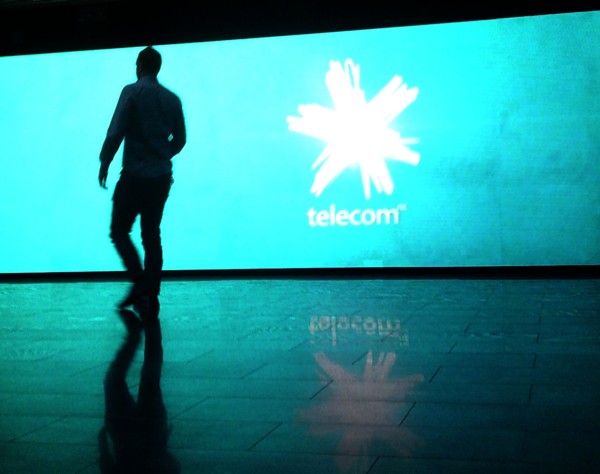Sparks fly as Telecom NZ unveils 4G, spectrum bid, rebrand

Telecom New Zealand has brought its 4G launch date forward, attacked rival Vodafone on price, announced another rebranding and set up what looks to be a lively bidding war for spectrum vacated by analogue TV services.
Telecom announced today that its 4G network will launch on 12 November in Auckland, Wellington and Christchurch for both prepaid and postpaid customers at no additional cost.

Vodafone’s equivalent 4G service has come at a surcharge since launch earlier this year.
Telecom chief operating officer David Havercroft said Telecom is aiming to provide an integrated network for fibre, 3G, 4G and WiFi that will deliver instant access to information for consumers and businesses.
Last week, Telecom announced the nationwide rollout of WiFi to its network of old-school pay telephone boxes.
At the same time Telecom has expanded its familiar “spark” brand, which now appears in several colours as well as blue.
Telecom Retail Chief Executive Chris Quin said 4G will allow consumers to do a lot more and businesses to stimulate more efficient ways of working remotely, with teams on the road able to make reliable video calls, download pictures and documents and use cloud services on their mobiles.
Quin also launched new “4G-ready” plans, which include higher data caps. Users will need to own a 4G-capable phone enabled for Telecom’s and to upgrade to a 4G SIM card.
Havercroft said 4G services will use LTE over the 1800MHz spectrum band. However, Telecom earlier indicated it had registered to bid for 700MHz spectrum freed-up by the digital switchover of analog TV services.
Telecom’s chief executive, Simon Moutter, confirmed that Telecom would participate in the auction expected to commence on 29 October in order to “encourage rapid development of 4G services”.
The 700MHz spectrum band is ideal for 4G mobile broadband services.
Moutter said 1800MHz spectrum is not well suited for use outside major urban areas.
“In less densely populated areas, the broader coverage range of lower frequency spectrum enables a 4G network to be built with less cell site infrastructure, significantly improving the network economics,” he said.
“We hope to use 700MHz spectrum as the backbone of our 4G network. If we are successful in the auction, we will begin deploying it and bringing 4G speeds to the rest of New Zealand as soon as we can source the handsets that can support it.”
Telecom’s 4G network is being built by vendors Huawei, Cisco and Ericsson with existing 3G provider Alcatel-Lucent